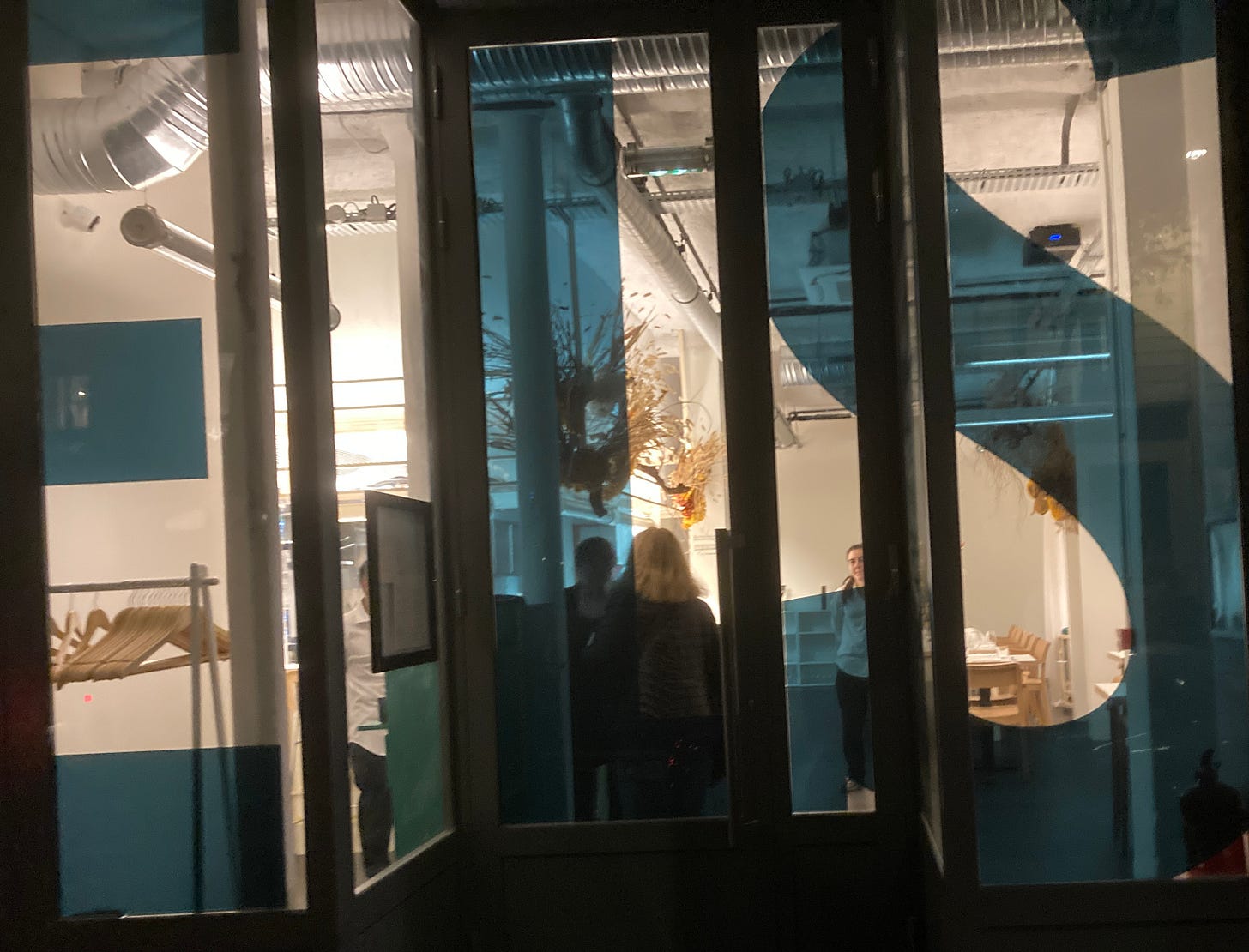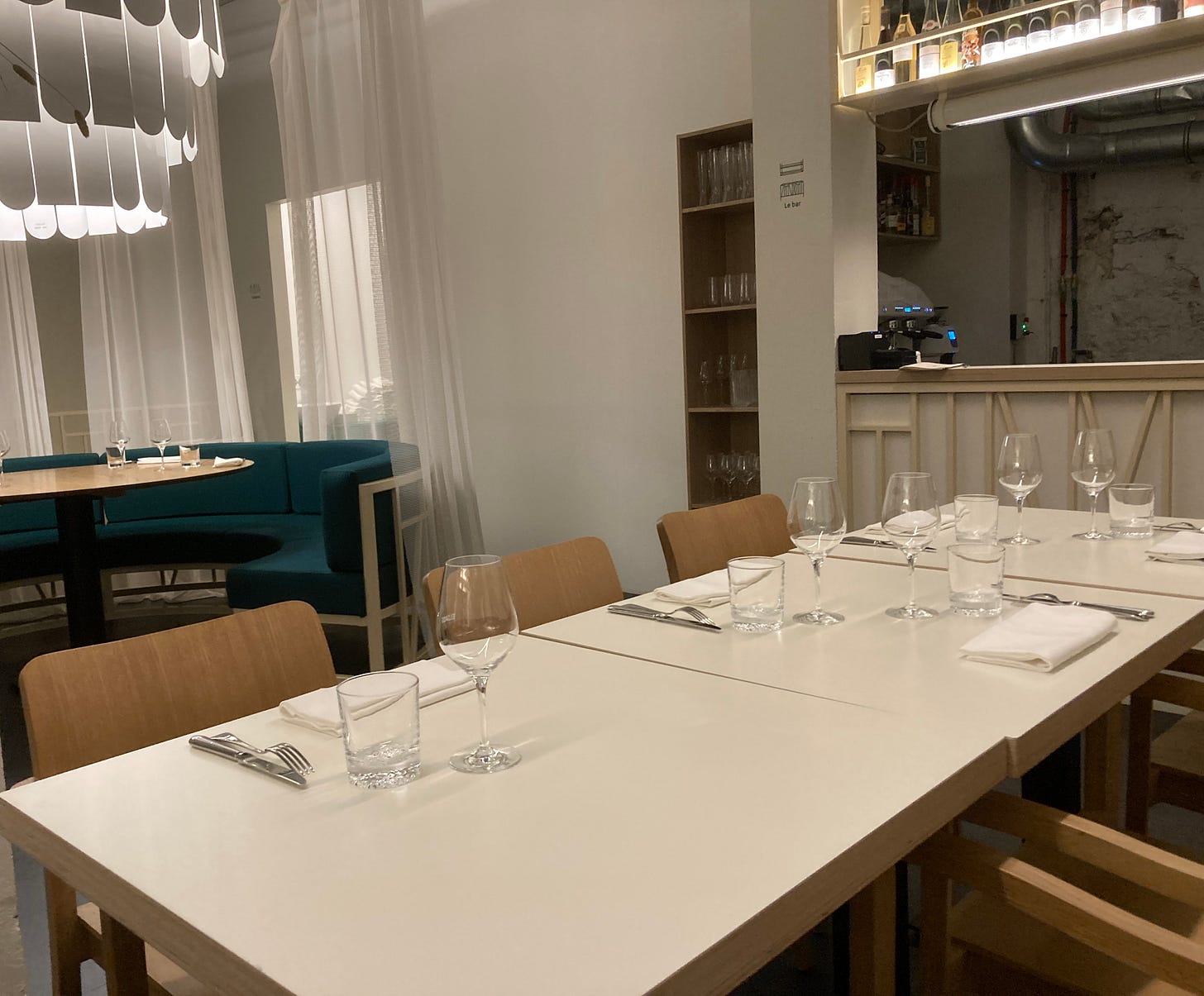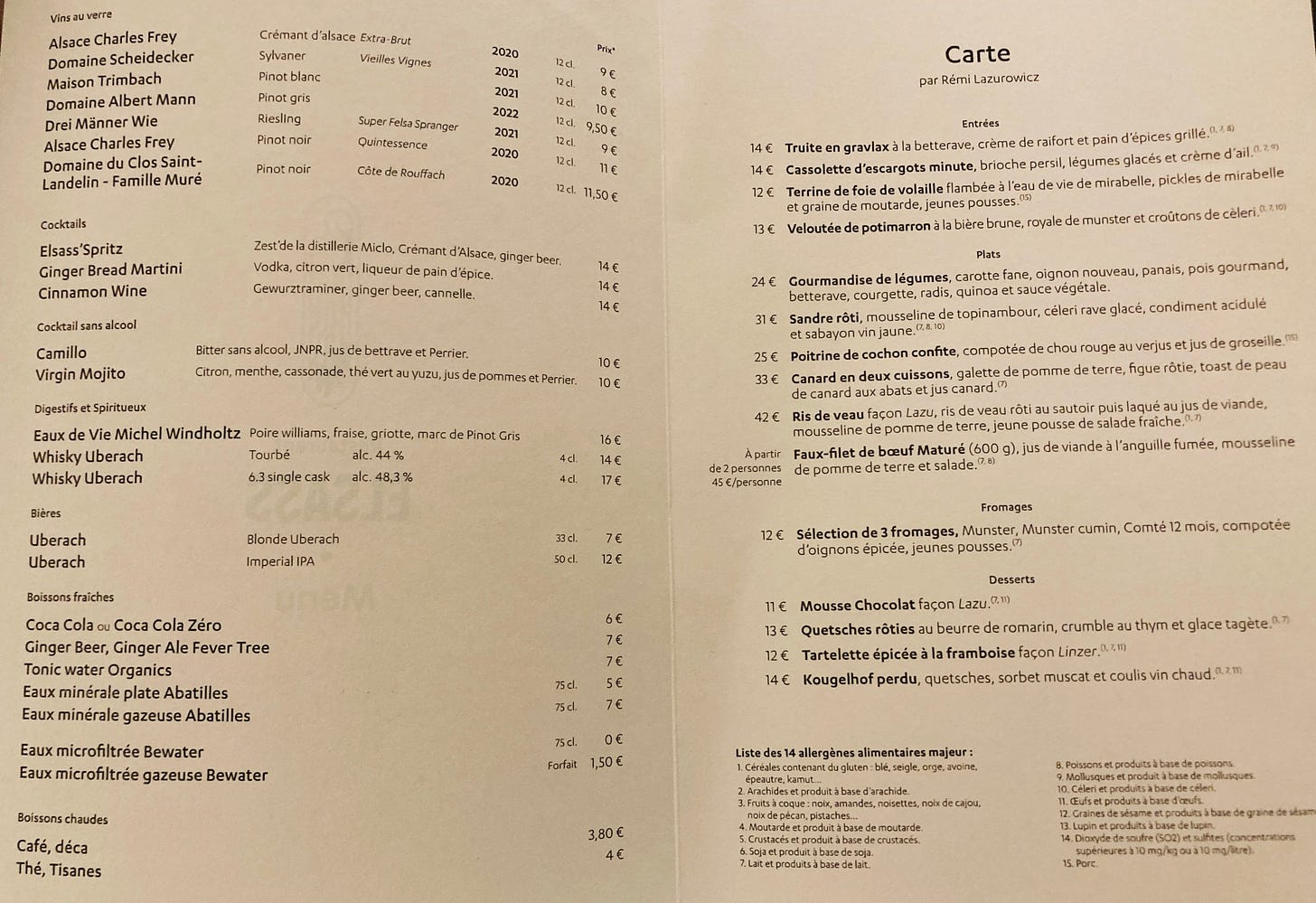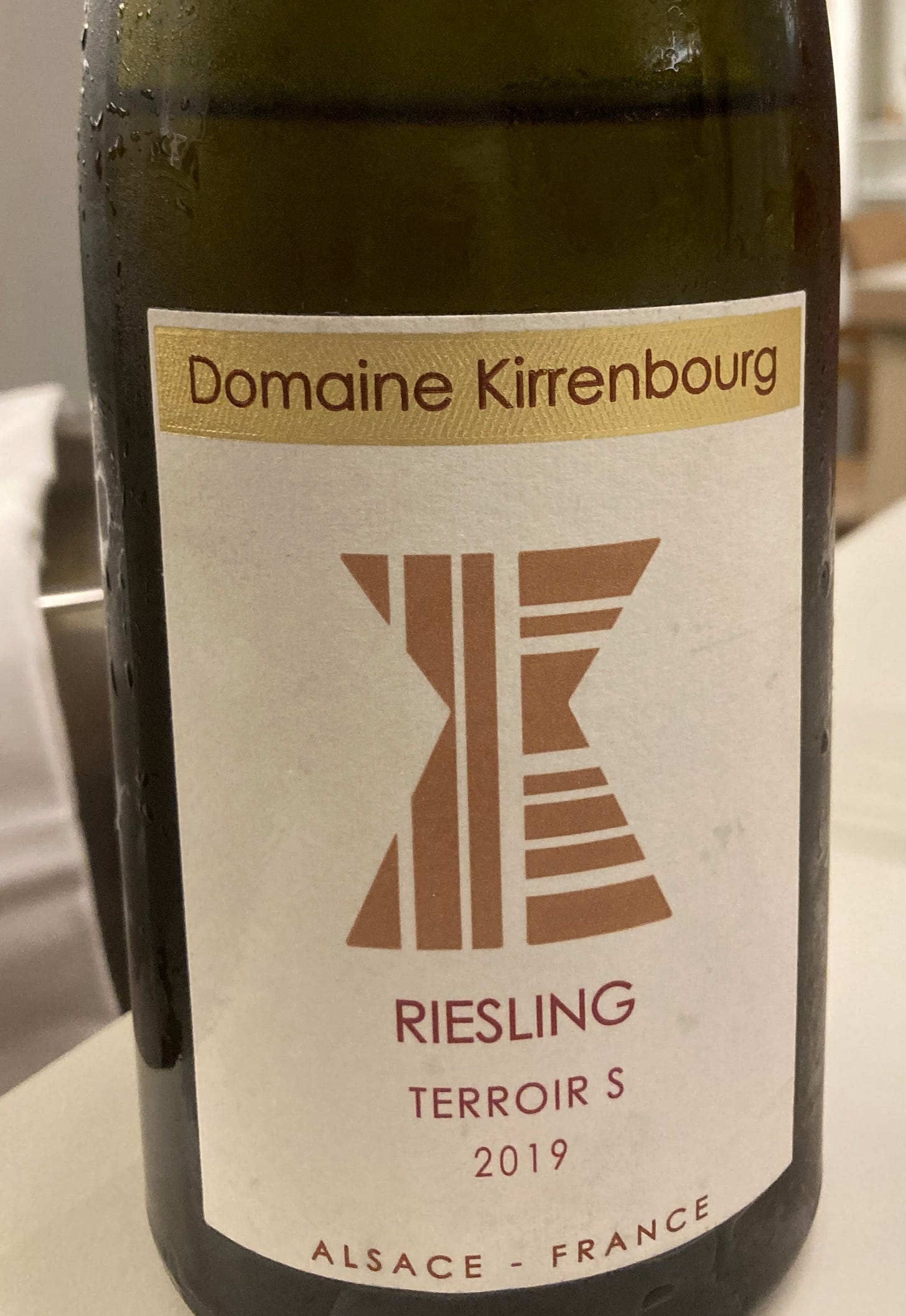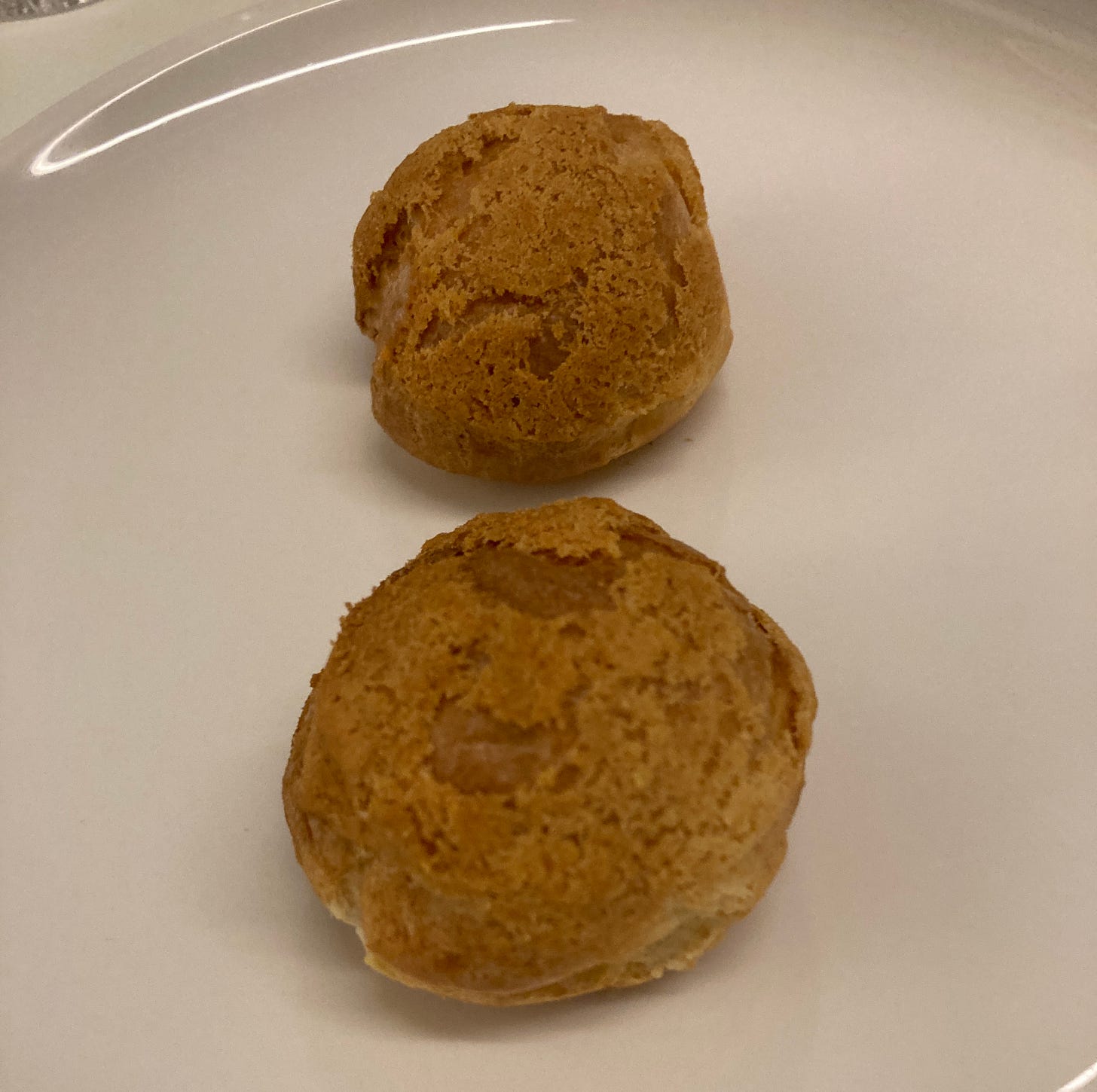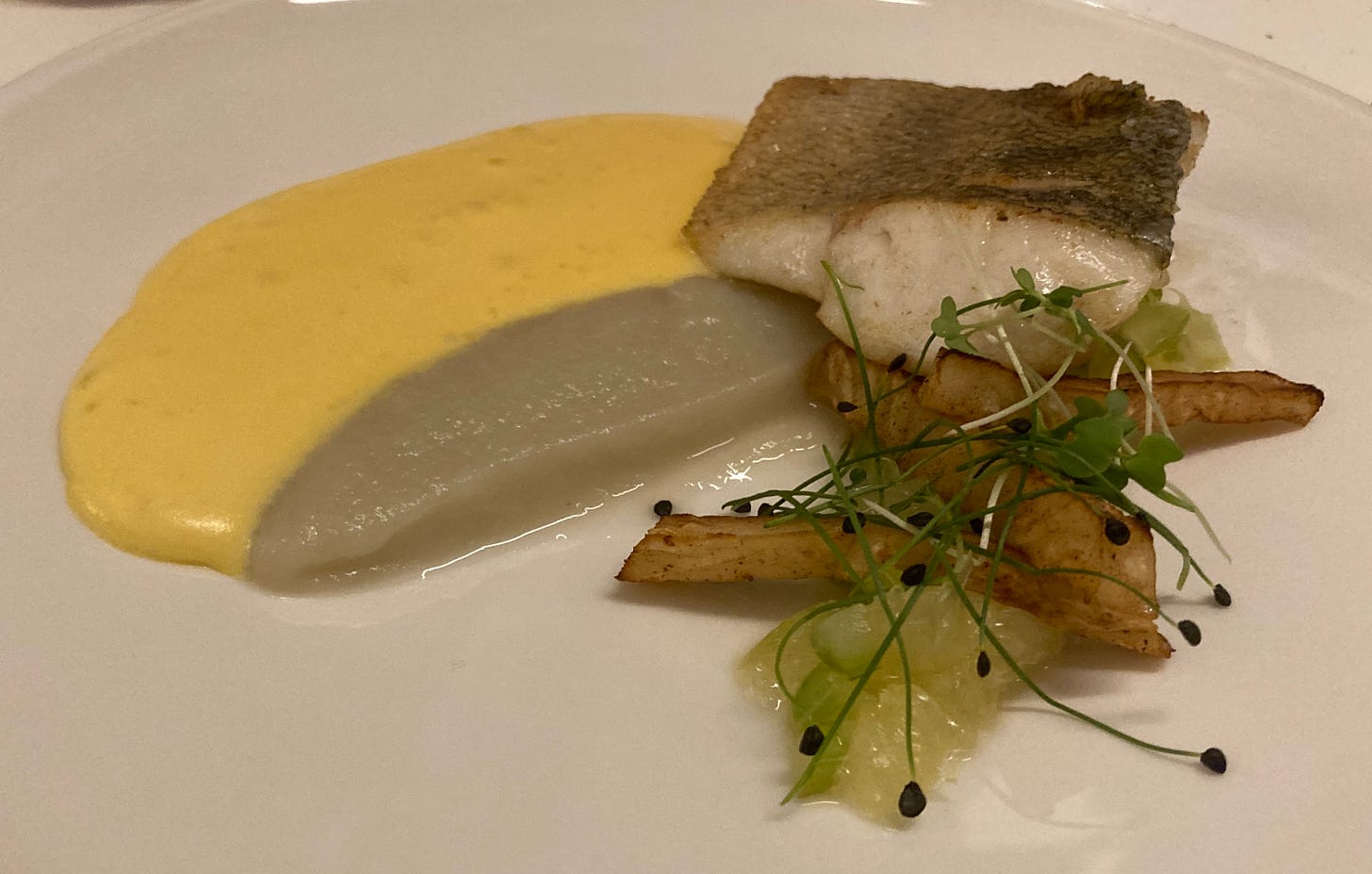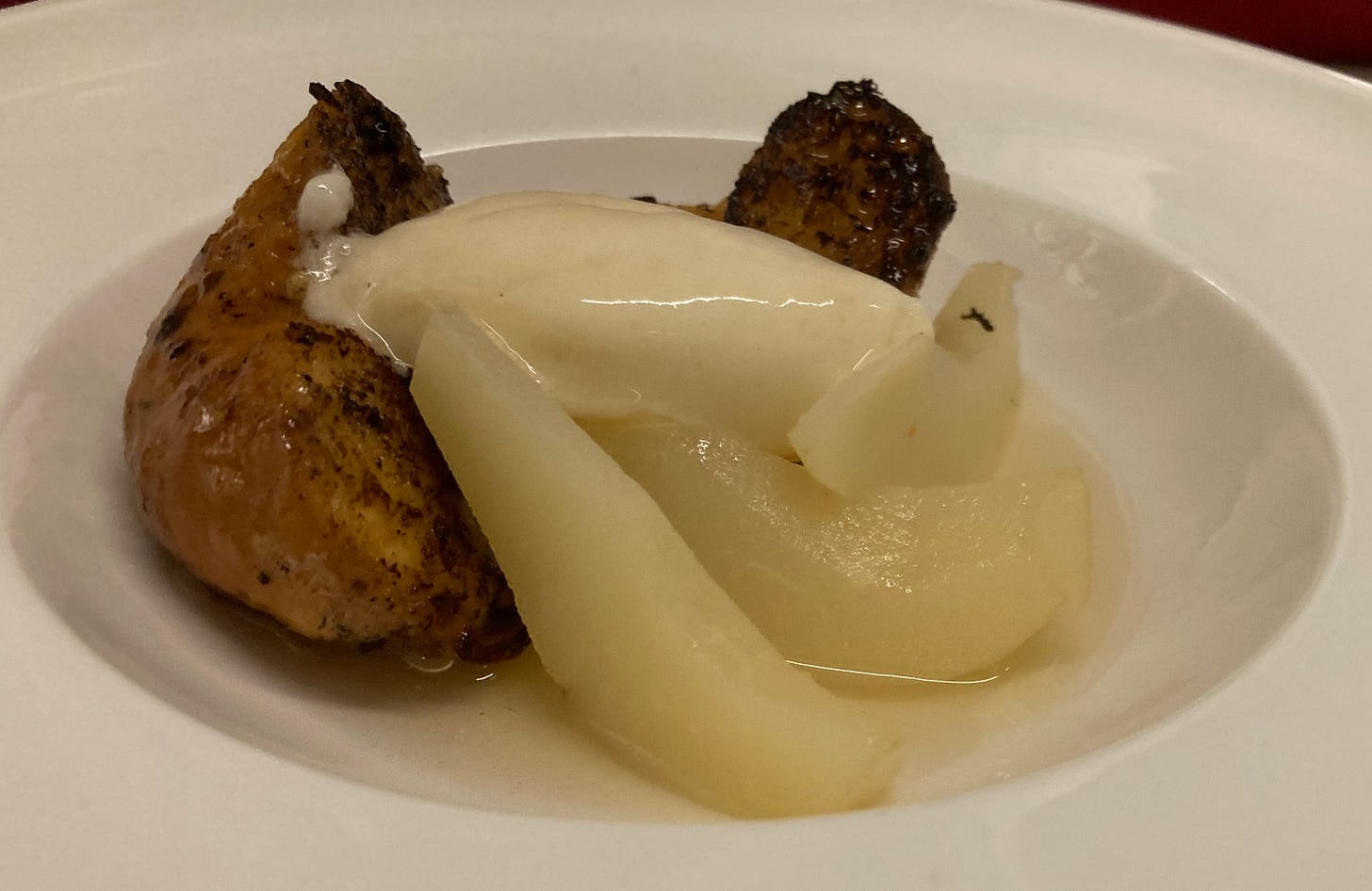Elsass is German for Alsace. Apparently, it is also a common pronunciation of Alsatians for Alsace, hence the name of this weeks-old restaurant in the 10th arrondissement. It is near the Hôpital Saint-Louis and not far from the popular Canal Saint-Martin and the Place de la République.
There are not many Alsatian restaurants in Paris, and nearly all are brasseries or other rustic establishments. That’s fine for when I’m in the mood for choucroute or flammenkuche. But the cuisine of Alsace is so much more varied and can go all the way up to haute cuisine, but you mostly have to travel to Alsace to discover that. (Old-time New Yorkers, of course, will fondly remember Lutèce, long considered New York’s finest restaurant, where chef André Soltner showcased the food of his native Alsace.)
Under chef Remy Lazurovitch (formerly of Bouillon 47), the reach is not into haute cuisine, but at least goes to modern bistrot cooking (bistronomie) and so represents a step forward for Paris Alsatian options.
Unlike so many Alsatian restaurants outside of Alsace, the decor is not quasi-kitsch hunting lodge homey. Instead, it is minimalist and even industrial on the inside with a glassed-in front bearing in huge transparent green lettering the restaurant’s name.
Tables are well-spaced and there is plenty of lighting. Capacity is sixty diners.
The diners were all French except for us, and mostly in their thirties plus or minus a few years.
The carte:
And the somewhat short wine list, consisting exclusively of Alsatian wines:
Hopefully, it will expand with time.
For wine, beginning with it as an apéritif and then going on to the meal, we took the 2019 Riesling “Terroir S” from Domaine Kirrenbourg (prior to its 2014 sale and renaming, it was the excellent Domaine Martin Schaetzel). Terroir S indicates that the wine is from the outstanding Schlossberg vineyard in Kaysersberg. but because this is not the estate’s grand cru selection from Schlossberg, the name of the vineyard is not used. The label indicates that in 2019, the vineyard was in the process of converting to biodynamics (and in fact it now is certified biodynamic). At 14% stated alcohol, this wine was a little riper than ideal (and indeed there was a touch of residual sugar poking through, too), but it was acceptable for an aperitif and then worked well with the food.
As an amuse-guele, we were given gougères filled with an onion cream sauce, and they were most satisfying.
In order to assure that we got some vegetables on this day, we elected as our first course to split the vegetarian main course consisting of seasonal vegetables:
It was not especially imaginative, but worked well enough for us.
For her first course, L opted for the roasted sandre (pike-perch) with Jerusalem artichoke purée, rutabaga, and a sabayon of vin jaune. She very much enjoyed it:
I took the échine de porc (pork shoulder) with red cabbage, verjus, and red currant juice (and green cabbage and red currants). It was a typical autumnal dish from Alsace and very satisfying.
L took the Kougelhof perdu with pears (substituting for the small dark plums listed on the menu), Muscat ice cream, and a spiced wine sauce for dessert. It was excellent:
I took roasted figs (subtituting for the mirabelles [small yellow plums] listed on the carte) with rosemary butter, crumble with thyme, and tagète (marigold) ice cream, and it, too was very good.
The bill:
Note: as frequently happens with restaurants when the first open, there was a promotion on the lafourchette.fr website that allowed us half off on the dishes we ordered. Without that promotion, the total would have been 185€.
Elsass provided an enjoyable meal, and with its seasonal Alsatian dishes, it is a restaurant to return to as the seasons progress.
Elsass
153 avenue Parmentier, 75010 Paris
Tél: 09 55 66 77 68
Mon-Sat dinner
https://restaurant-elsass.com/
Métro: Goncourt, République, Jacques Bonsergeant, Belleville,



